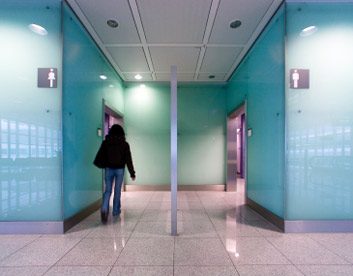
Don’t be afraid
Public washrooms can be unpleasant places to say the least, but are they unhealthy? We asked microbiologist James Scott of the University of Toronto’s Dalla Lana School of Public Health to help us separate washroom facts from fiction. Read on to find out if your fears about public washrooms are justified.
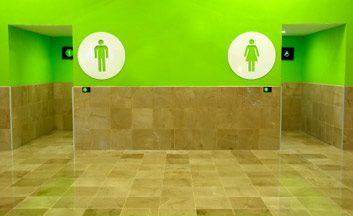
1. You’re more likely to catch an illness in the washroom than anywhere else
Myth. “An elevator would be a more hazardous place than a public washroom,” says Scott. That’s because airborne viruses travel in small, poorly ventilated spaces that put you in close proximity to a lot of people. However, most public washrooms are spacious and well ventilated. “Those two facts make the washroom a difficult place for [airborne] viruses to transmit from one person to another, ” says Scott.
Viruses and bacteria that do lurk in the loo, such as E. coli and norovirus, are shed in fecal matter and through improper hand washing, get picked up on your hands and ingested. Sounds disgusting, but Scott says that for a healthy person, these bugs cause little more than the unpleasant symptoms of the stomach flu.
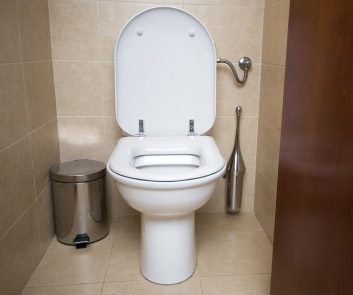
2. Covering the toilet seat before you sit down is a good idea
Truth. Blame it on Community-Associated Methicillin Resistant Staphylococcus Aureus (CA-MRSA), a new drug-resistant strain of bacteria that, in some populations, can be transmitted by the skin and may result in skin infections.
“While I’ve never read a case report of a toilet seat being involved in the movement of CA-MRSA from one person to another, it’s absolutely plausible because one of the places [the bacteria] like to hide is in our groins,” says Scott. CA-MRSA can also survive on surfaces for long periods of time. So while your risk of contracting CA-MRSA from a toilet is very low, Scott says it’s better to be safe than sorry by putting down a barrier between you and the seat.
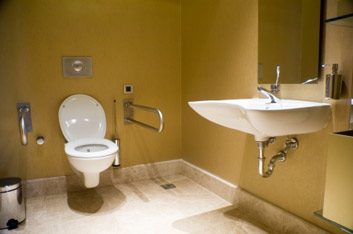
3. Flushing before you sit down makes the toilet more sanitary
Truth. Water that’s been sitting in the toilet bowl for a while is an ideal environment for bacteria to multiply. “If you’re sitting down to pee, you’re disrupting the surface of the water, which creates a mist that carries bacteria,” says Scott. When the water evaporates, the bacteria become dust that you can inhale. Flushing cleans the bowl, which might wash away some of the bacteria.
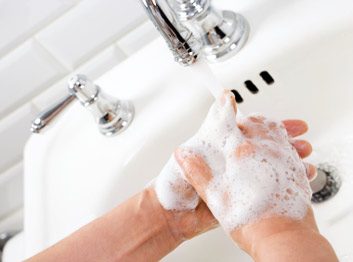
4. Washing your hands in a public washroom is counterproductive because the fixtures and surfaces are covered with bacteria
Myth. Proper hand washing, even in a filthy public washroom, improves your hygiene, says Scott. Here’s how to do it, according to the Public Health Agency of Canada:
1. Wet your hands with warm water.
2. Put a small amount of liquid soap on your hands.
3. Rub hands together for 20 seconds to produce a good lather. Take care to scrub up your wrists and backs of hands, between your fingers and under your nails.
4. Rinse your hands with running water for at least 10 seconds.
5. Grab a paper towel to fully dry your hands. Use that towel to turn off the taps. Do not touch the taps with your clean hands.
6. Grab another piece of towel and use it to open the washroom door.

5. It’s safer to flush the toilet with your foot than with your hand
Myth. “If there’s anything in the bathroom that’s going to have a lot of bacteria on it, it’s the toilet handle,” Scott says. However, he strongly cautions against the acrobatics required to use your foot to flush. “There’s probably greater risk of injury from slipping and falling if you’re standing on one leg to flush the toilet than from touching the handle. It’s safer to use a wad of toilet paper to press the lever,” he says.
Related:
• What viruses really do to your body
• How not to get sick
• 9 ways to boost your immunity
